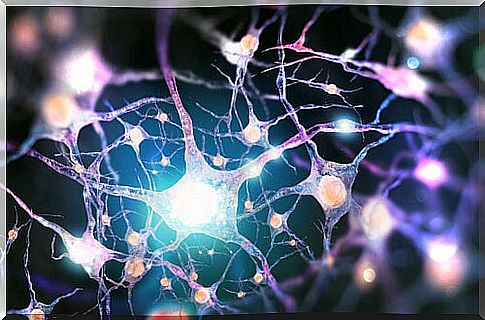Dynorphins: Endogenous Opioid Neurotransmitters

For four decades, dynorphins have been considered to play an increasing role in numerous pathways in the brain. They are members of the opioid peptide family, which bind to kappa opioid receptors.
They are located in places in the brain that we know well : the hippocampus, the amygdala, the hypothalamus, the striatum and the spinal cord. Thus, its functions are related to learning and memory, emotional control, the response to stress and pain.
After some experiments of various kinds, the implications of dynorphins in physiology began to be provided. Thus, we currently know that the pathophysiological mechanisms that may involve dinorphins include: epilepsy, addiction, depression, and schizophrenia.
In 1979, Goldstein and his colleagues described the opioid properties of a tridecapeptide. To denote its extraordinary potency, the natural peptide was named “dynorphin.” The prefix dyn- was taken from the Greek dynamis (power) and the ending -fine indicates its opioid nature.

Dynorphins in epilepsy
In the 1980s and 1990s, there were a considerable number of publications on the functions of dynorphins in different models of epilepsy. Due to how they are distributed, it was thought that it was more likely to act in complex partial seizures originating in the limbic system, or more precisely, in the hippocampus.
Since then, stimulation of kappa opioid receptors has been accepted as an anticonvulsant mechanism. However, the anticonvulsant properties of endogenous dynorphin have only been revealed through experiments in mice.
Addiction and dinorphins
The dynorphin-k-opioid receptor system plays a crucial role in the mechanisms of reward and addiction. Difficulties in regulation of the dynorphin-k-opioid receptor system are induced by repeated drug abuse and involve the mesolimbic reward system. Thus, the dopaminergic pathway from the ventral tegmental area to the nucleus accumens is considered the main site where dynorphins act in the setting of addiction.
Dynorphins in emotional control
What we even know about the relationship between dynorphins and emotional control is quite a lot, but what we still have to know is too. This is because animal emotion testing is not as straightforward as EEG recordings.
Anxiety
We can see manifestations of anxiety in many living beings. In a biological context, anxiety prepares the individual to face a potential threat. Thus, the heart rate, body temperature, and serum corticosterone levels increase.
Additionally, anxiety disorders are often comorbid with other mental health problems, such as depression, addiction, or schizophrenia. Thus, anxiety behavior involves various neurotransmitter systems. Along with the classical transmitters serotonin and norepinephrine, several neuropeptides have been proposed as modifiers of anxiety-related behavior. Among them are dynorphins.
Although their role is not very clear, dinorphins are known to be associated with anxiety. To get a clear idea of how they are related it would be necessary to do more research and analyze the conditional elimination models ,
Dinorphins and stress
Dynorphins also play a role in the onset of stress. This is due to the strong interrelation of these with corticotropic releasing hormone (CRH).

Dynorphin and psychotic disorders
Dynorphins and depression
Depression is frequently seen as a disease related to maladaptation to chronic stress. Although there are many treatments for this disorder, virtually all target the serotonergic and / or noradrenergic systems.
It has been shown that the dynorphin and kappa opioid receptor-affecting virtually all key circuits considered in depression. Thus, generally, the activation of kappa opioid receptors is considered pro-depressive.
Dynorphins and schizophrenia
There is increasing evidence for the possible involvement of dynorphins and kappa-opioid receptors in schizophrenia. However, more research is needed to determine how they are related.
Much research remains to be done, but the implication of dynorphins in multiple mental disorders seems clear. Although its role in some disorders is still diffuse, we know that its activation together with the kappa opioid receptors has a lot to do with pathologies like these.









